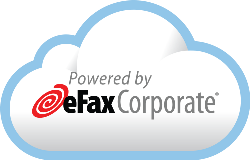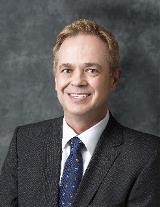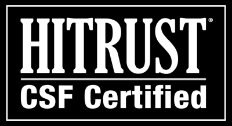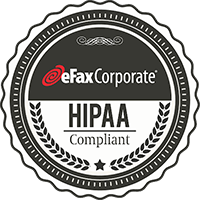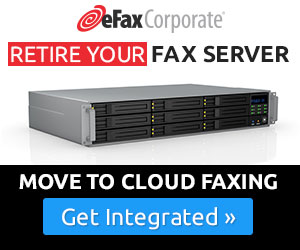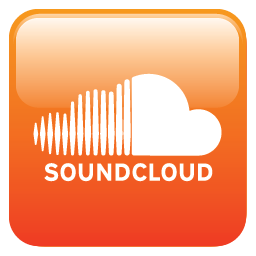Point-Counterpoint: Faxing Resolutions in Health Care
Last month I read a by-lined article on the Huffington Post by Dr. Sachin Jain, “A Health Care Resolution for 2014: Let’s Retire the Fax Machine.” I had conflicting reactions to Dr. Jain’s modest proposal.
As the author of several articles with similar positioning (Will 2014 Sound the Death Knell for Fax Machines? and Is 2014 the Year to Retire Your Fax Server?) at first glance it seemed like I had found a kindred spirit. But then I read the content of his blog. I will agree that there are faster, better and more secure methodologies for sharing protected health information with appropriate parties (care givers, insurers and the patients themselves) but I disagree with the prescription that all faxing should be banished.
Where Dr. Jain’s proposal goes awry is when he uses the terms fax machines, fax servers and faxes interchangeably. Let’s start with an assertion that I agree with:
“The health care industry continues to use fax machines to: transmit prescriptions to pharmacies, share notes across doctor’s offices and facilities, process and adjudicate claims and billing information, transmit radiology and pathology results, and register new patients”
That is a pretty impressive list of cross functional competencies achieved by the humble fax machine. Could all of these functions be achieved with alternative technologies? Certainly. Could these systems be implemented effectively by every care giver, administrator, clinician, insurer and patient? There I have my doubts.
It reminds me of an experience a few years ago when my spouse had an extended hospital stay. Each morning an orderly dropped off a paper copy of the next day’s menu. She would circle the items that she wanted from a restricted menu, and the next day that’s what she got. During the second week a staff dietician visited with a tablet PC and explained that hospital now had an automated system for ordering meals. For the next few days the dietician would ask my wife what she would like, entered the responses onto an eform and hit submit. For the next three days the meals arrived with random selections: margarine instead of butter, chicken instead of pasta, and so on.
The dietician was dumbfounded, as clearly she was capable of entering in an order correctly. As a grizzled veteran of the document process automation industry (and a dutiful husband), I was compelled to investigate. It turns out the new system was paperless, so my wife’s selections were being sent from the tablet to a monitor in the kitchen, where orders were now assembled while viewing a flat screen display. The hospital had eliminated paper, modernized a process, yet couldn’t get an order correct. They invested a considerable sum on hardware and software, and the result was utilizing a highly compensated dietician to take orders, when the antiquated paper system was self-service.
Why did the new system fail? It was designed without considering all of the constituents. In this case, most of the kitchen staff didn’t speak English. Over time they had learned that a circle here or a check mark there meant butter or chicken soup. The new system was modern, but it wasn’t better.
My point in sharing this story is not to say that paper is always the best option. Clearly, having protected health information in paper format—either for record keeping or transport –is far from ideal. However, before adopting an alternative system, it is prudent to make sure the proposed alternative provides real benefits, is cost effective and realistic. Dr. Jain’s proposal for replacing all fax machines in the next year: “an interoperable nationwide health care internet.“ He cites federal government’s investment in the Nationwide Health Information Network (NwHIN) as the cornerstone for this proposed ecosystem for sharing encrypted, secure health information “directly to known, trusted recipients.”
Setting aside the understandable skepticism of the Federal government’s ability to implement an effective web-based exchange of health care information, I like and fully endorse the ideals of NwHIN standards. Yet I can’t help but be concerned that a proposal that suggests moving from a system that allows participants to easily share digital and analog data (and faxing does just that,) to a system that requires all participants to adopt one methodology, is doomed from the onset.
The biggest concern for me is that the viability of this proposal is based on the assertion that it requires participation from “the whole of the health care industry: physicians, hospitals, health plans, governments, home health care agencies, pharmacies, pharmaceutical and device manufacturers, clinical research organizations — no sector should be excluded.” That’s fine for the industry, but one important group missing from this model: patients.
Dr. Jain’s concludes his article with “Health care needs to put the fax machine to rest. For good. And for the good of patients.” A noble sentiment, to be sure, but I don’t see how patient’s benefit from this proposal. When dealing with a diverse group with disparate needs, priorities and technical capabilities, it is advisable to devise a system that is inclusive rather than prescriptive. Rather than ban faxing from an idealized nationwide health care internet, or even the hundreds of Health Information Exchanges, how about incorporating faxing into the model? Today organizations are successfully incorporating cloud fax services with document and data encryption with EMRs and other data-rich Internet applications. These are HIPAA-compliant solutions that enable covered entities and patients alike to choose the best communications method for sharing ePHI.
Finally, I’d like to address the security issue. Dr. Jain states “If we really want to get serious about health information privacy, the fax machine — not the EMR — is public enemy #1, #2, and #3.” This is simply incorrect. A visit to the HHS.gov site, which publishes HIPAA violations, clearly demonstrates that the most egregious security violations are from covered entities not securing and encrypting data on laptops, tablets and other mobile devices and then losing them. Certainly the Doctor would not recommend we retire portable computing devices from the clinical environment?
Faxed technology is available to encrypt documents and the protected data that they contain both in transit and at rest (in storage.) This is the reason faxing is preferable to heal care organizations over email. It is not simply inertia or reluctance to embrace new technology. The primary reason given for faxing documents is HIPAA compliance. While both email and fax can be encrypted, secured, and documented with an audit trail, email is also susceptible to spam, virus and other data security issues.
Look, it is easy to join the bandwagon and bash fax machines. I’m as guilty as anyone in doing this. I’ve read opinion pieces where faxing is equated to telegrams and smoke signals. But give the humble fax machine its due. People use it because it is easy, secure and—most importantly—the least common denominator for exchanging document based information. Instead of condemning faxing along with the fax machine, perhaps a better and ultimately more successful proposal would be to encourage health care organizations to adopt systems that enable all stakeholders—caregivers, insurers and patients alike—to efficiently and securely share information. That’s a realistic proposal that we could all get behind.
